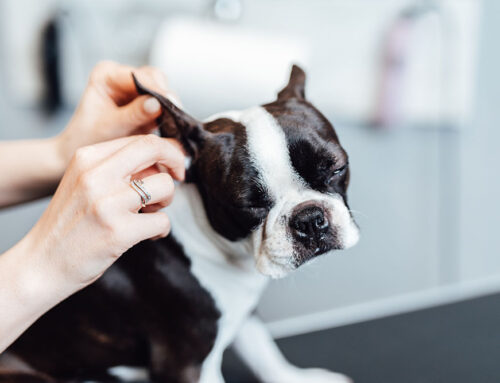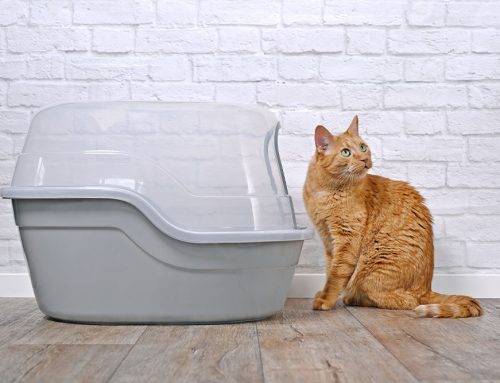Few words strike terror in pet-owner hearts more than hearing, “Your pet needs medication.”
Those words seem to echo mockingly off the four exam room walls. You know you should be listening as the veterinarian outlines your pet’s prescription, but you’re too busy having mental flashbacks to the last paws-and-claws battle royale earlier this year.
The dread you feel is actually fairly common. Many pet owners struggle to successfully medicate their pets. Fortunately, our LaGrange Veterinary Hospital team can offer a few easy tips and tricks that can sound the final bell on those eternal wrestling matches, and turn medicine time into an easy win.
Discuss your concerns with your veterinarian
If your domestic pet becomes a wild animal when it’s time for medicine, talk to your veterinarian. Other options that better suit your pet’s preferences, such as a different formulation (e.g., liquid, chewable tablets, or an injection), may be available. Some medications can be compounded by an outside pharmacy, and transformed into tasty pet treats or flavored liquids, such as beef, chicken, or fish. Several drugs can be made into transdermal applications and applied directly to the skin. While these preparations are more costly, they are a great option for resistant pets and long-term administration.
Use irresistible food to entice your pet
Getting your pet to take medication is what trainers call an “expensive behavior”—meaning you must pay generously for a job well done in the form of high-value food rewards.
But, before you pull out the go-to peanut butter, consider how your pet feels—pets may negatively associate the smell or taste of a food used unsuccessfully in the past, and be instantly skeptical. These savvy pets need high value enticements, such as:
- Peanut or almond butter
- Cheese
- Cream cheese
- Canned pet food
- Flaked tuna
- Lunch meat
- Pill Pockets
Sticky foods can be thickened with flour to make a pliable dough and shaped into a treat, while thinner preparations can be used to hide liquid medicine in a bowl or on a lickable mat. If your pet has dietary restrictions, ask your veterinarian what’s right for them.
Use food effectively when medicating pets
Pills or tablets should be evenly covered, and wrapped in your food reward. Give your pet a test treat and watch—if they chew, the treat is too big, and should be resized until they readily swallow. Hide the medication in one treat, and then create three or four identical “blanks.” Give your pet the medicated treat in between “blank” treats.
Spreadable treats are great when you need your pet to face a certain direction, or preoccupy them during treatment. Spread the treat inside a Kong or similar hollow toy, on a lickable mat, or inside an empty syringe that can be put directly into the pet’s mouth. This provides a positive distraction for pets receiving eye, ear, or topical medicines.
Prepare medication away from your pet
If the pill bottle’s rattle sends your pet running for the hills, take your preparations elsewhere. Ready all medication supplies—including treats—away from your pet, to prevent unnecessary fear and stress. Wash your hands after handling medication, to prevent contaminating the non-medicated food.
Change the environment, and establish positive responses to medication. Take your supplies to a neutral area with no negative association, where you haven’t previously given your pet their medication, and then offer treats and praise.
Use non-threatening body language when working with your pet
Our pets think we’re a pretty rude bunch—human tendencies to lean, reach, hover, and hug are offensive gestures in the animal kingdom, and may be partly to blame for your pet’s reactions to being medicated. Show your pet you mean no harm with a more considerate approach:
- Get on your pet’s level — Standing over your pet is intimidating, and will cause them to back up or flee. Medicate large dogs from a seated position, and place small pets on a couch or table. When you’re more comfortable, your pet will be, too.
- Don’t get grabby — Reward your pet for coming near, rather than manually pulling them into position.
- Stand to the side — Facing your pet is confrontational, so stay to the side, when possible.
- Be aware of pain — Consider your pet’s arthritis or any injury when restraining them. Pain is commonly overlooked as a reason for a pet’s struggle with medication.
Learn to use manual pilling techniques and tools for pets who can’t be bribed

If your pet’s medication must be given on an empty stomach, or your pet simply isn’t interested in food rewards, manual methods may be necessary. When done correctly, these techniques are quick, minimally stressful, and safe for pet and owner. Our team is happy to demonstrate these techniques, or you can consult these guides for dogs and cats.
One of the best ways to ensure success when medicating your pet is to simply stay calm. Pets can sense anxiety, and may react more to your fear than their own. Patience and a peaceful, confident approach will go a long way toward improving your feelings—and your success rate—for medicating your pet. For additional questions about your pet’s medication, or to schedule a demonstration, contact LaGrange Veterinary Hospital.








Leave A Comment